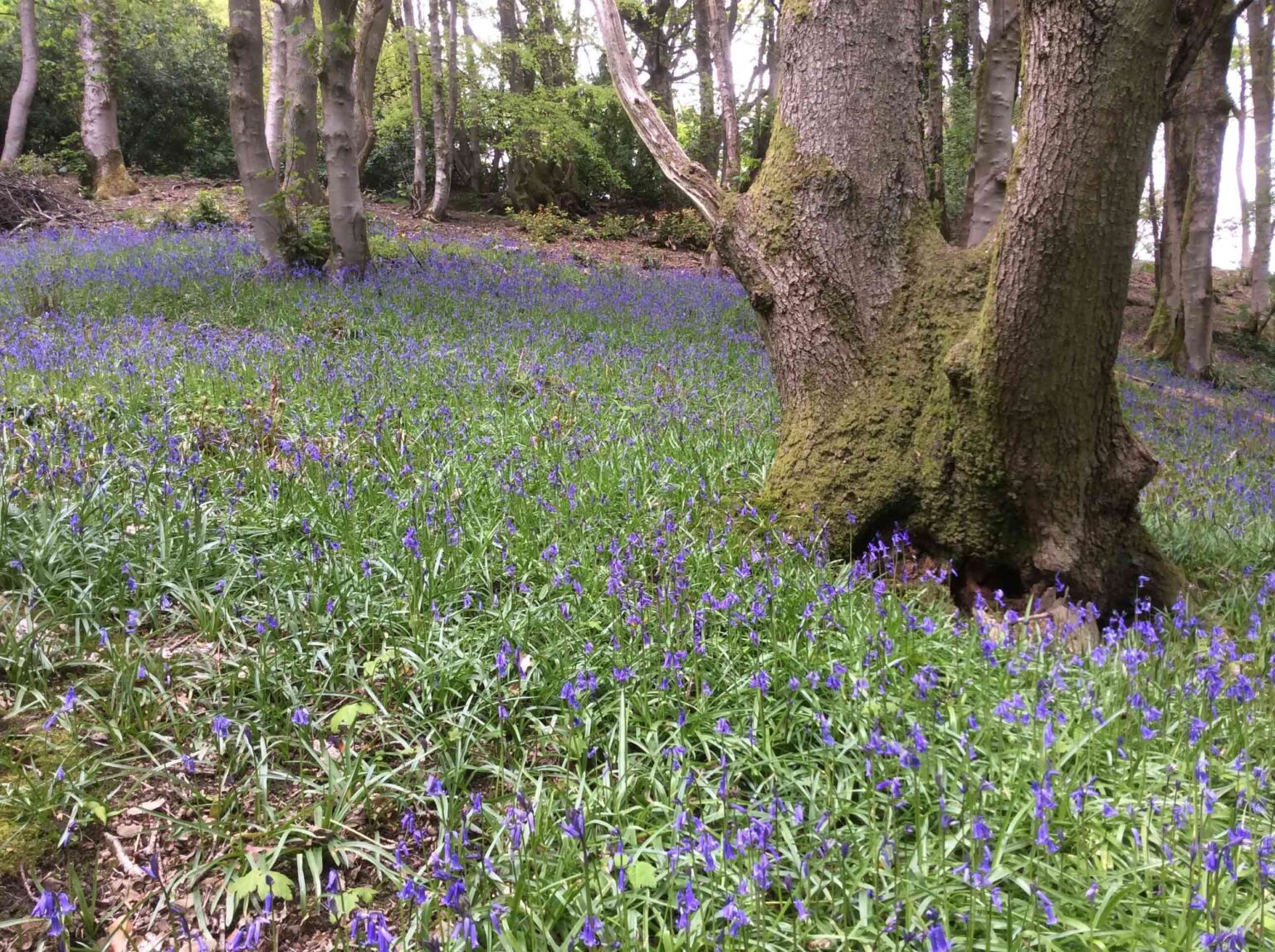Spring has arrived in the woods and the cuckoo has started calling from across the valley.
Now is a good time to notice those flowers that are “indicator species for ancient woodland”. That means the ground has been under woodland cover for at least 4 centuries and possibly much longer, perhaps with some intervention from humans, such as coppice rotation.
Here are some illustrations taken on May 17 this year.
- Bluebells, the classic woodland bulb. They smell faintly of hyacinths, and are in that family. These are English bluebells, with more delicate, droopy-topped stems than their Spanish cousins obtained from garden centres.

- Wild garlic (ramsens). They are in full bloom at present. The young leaves and flower buds are edible (washed thoroughly), but please leave ours alone until you’ve asked! They are prolific near the Bewerley gate entrance.

- Dog’s Mercury. Definitely not edible. It carries a green flower at present. Provides wide ground cover for insects and rodents.

- Wood anemone. Starting to fade now, and can be overtaken by bluebells (as here) and other vegetation later, but an early sign of spring.

- Golden saxifrage. This likes the boggy ground near the top of the pond by the bridge. It too is edible, but we don’t have a lot so please leave it for others to notice.



